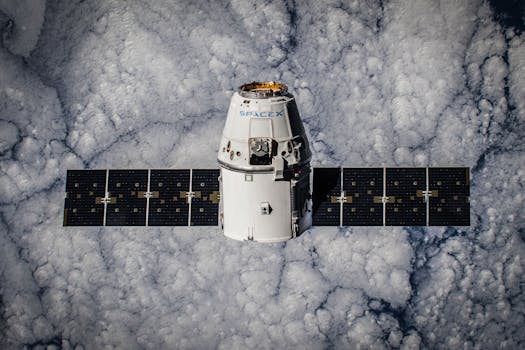Breaking Barriers: How Recent Developments are Transforming Satellite Communication

Breaking Barriers: How Recent Developments are Transforming Satellite Communication
Breaking Barriers: How Recent Developments are Transforming Satellite Communication is an exciting topic that has been gaining significant attention in recent years. The recent advancements in satellite communication are breaking barriers and transforming the industry in various ways. With the increasing demand for global connectivity, satellite communication has become a vital component of modern telecommunications. In this article, we will explore the recent developments and innovations that are shaping the future of satellite communication.
Satellite communication has come a long way since its inception. From humble beginnings to the current state-of-the-art technology, the industry has witnessed significant advancements in recent years. One of the major breakthroughs in satellite communication is the development of high-throughput satellites (HTS). HTS technology has enabled satellites to offer higher bandwidth and faster data transfer rates, making it possible to support a wide range of applications, including broadband internet, mobile networks, and IoT connectivity.
Another significant development in satellite communication is the emergence of low-Earth orbit (LEO) satellites. LEO satellites are designed to operate at lower altitudes, typically between 160 and 2,000 kilometers, which allows for faster data transfer rates and lower latency. This technology has the potential to revolutionize the satellite communication industry by providing faster and more reliable connectivity. Companies like SpaceX, Amazon, and OneWeb are already working on deploying LEO satellite constellations to offer global internet coverage.
Advancements in Satellite Technology
In addition to HTS and LEO satellites, there have been significant advancements in satellite technology, including the development of advanced propulsion systems, more efficient power generation, and improved thermal management. These advancements have enabled satellites to operate more efficiently, reducing costs and increasing their lifespan. Furthermore, the use of 3D printing and other advanced manufacturing techniques has made it possible to produce satellites at a lower cost and with greater speed.
The development of satellite-based IoT (Internet of Things) connectivity is another area that has seen significant growth in recent years. With the increasing number of connected devices, satellite-based IoT connectivity has become a vital component of modern telecommunications. Satellites can provide connectivity to remote and underserved areas, enabling a wide range of applications, including smart agriculture, smart cities, and industrial automation.
Challenges and Opportunities
Despite the significant advancements in satellite communication, there are still several challenges that need to be addressed. One of the major challenges is the issue of latency, which can be a significant problem for real-time applications. However, with the development of LEO satellites and other advanced technologies, latency is expected to decrease significantly. Another challenge is the issue of regulatory frameworks, which can vary from country to country, making it difficult to deploy satellite-based services globally.
On the other hand, the opportunities presented by satellite communication are vast. With the increasing demand for global connectivity, satellite communication has the potential to bridge the digital divide and provide connectivity to underserved areas. Furthermore, satellite communication can play a critical role in disaster response and recovery, providing vital connectivity when traditional communication infrastructure is damaged or destroyed.
Conclusion
In conclusion, recent developments in satellite communication are transforming the industry in various ways. From HTS and LEO satellites to advanced propulsion systems and satellite-based IoT connectivity, the industry has witnessed significant advancements in recent years. While there are still challenges that need to be addressed, the opportunities presented by satellite communication are vast. As the demand for global connectivity continues to grow, satellite communication is expected to play an increasingly important role in shaping the future of telecommunications.

